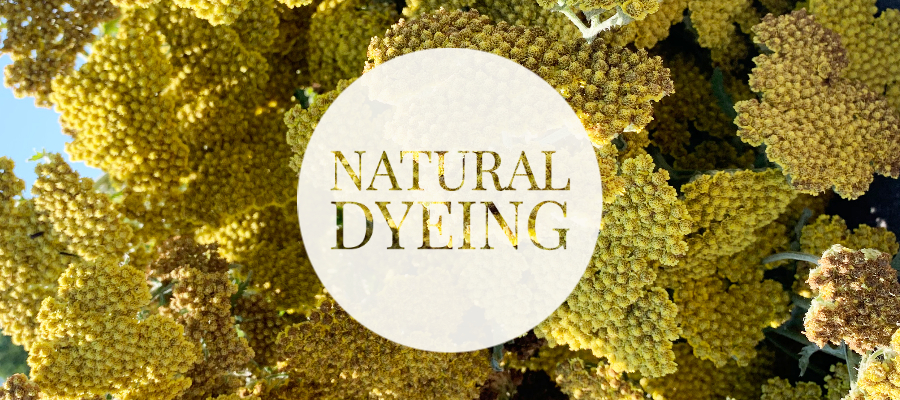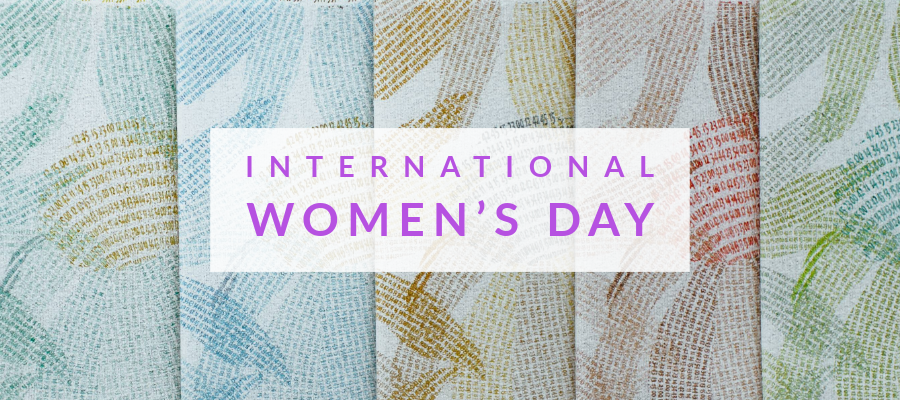
Natural Dyeing with Avocado and Yarrow
Our latest trend letter is all about natural materials. Wicker, rattan and cane are catching our eye on modern pieces, geometric lighting and even with loud pops of color. Natural materials are inspiring products even in the automotive industry. But, natural materials are also extending into textiles and not just in fiber form. Natural dyes are having a moment in the spotlight. While mostly reserved for smaller brands and limited runs, it’s fun to see brands as big as Chipotle putting out a line of accessories dyed with (you guessed it) avocados. All this talk about natural dyeing inspired us to do a bit ourselves this summer.
It’s a bit of cliche because it’s true, most people who work with textiles and fiber eventually find themselves wishing they’d paid more attention in chemistry class. Why? Because dyeing fibers is all about science, bonds, and molecules. It’s about going down rabbit holes about insect shells, sumptuary laws and realizing you could spend the rest of your life studying dyeing and there would still not be enough time. We also tend to have a bad habit of seeing shelves full of yarn and not seeing the exact color you want.
First natural dyeing experiment: avocado!
After throwing away more avocado skins and pits than we care to admit, we started saving them to try out dyeing with avocado. Avocado dyeing is a fun surprise because you end up with a beautiful shade of pink, not green. Dyeing with avocado involves two main steps.
First, you need to make the dye. To do this, put the cleaned skins and pits in an aluminum pot and simmer on a stove for about 90 minutes. This extracts the dye from the material. Once complete, strain everything through a sieve lined with muslin and discard the skins, or repeat to try and extract even more dye. This process leaves you with a small amount of concentrated dye.

Next, pour the dye back into the pot and heat for an hour. This helps add some of the aluminum from the pot to the dye. Leave the dye in the pot for at least 24 hours. Next, add wet yarn or fabric to the dye pot. You can add water to the dye if you need more volume. Let the yarn soak in the pot to reach a desired shade and then remove and let dry. Keep in mind the yarn will look lighter dry. You can repeat again for a darker shade.
Rinse when done to remove any excess dye. Generally, you will use a 1:1 ratio of avocado to fabric or yarn. Also, when dyeing with avocado, there is no need to use a mordant. The alum from an aluminum pot, as well as the tannin in the avocado seeds, serve this purpose.
Next experiment: solar dyeing.
Solar dyeing harnesses the heat of the sun to make the chemical reaction instead of using direct heat from the stove. For this experiment, Kristen harvested yarrow from her yard. Dyeing with yarrow required mordanting the yarn before starting. We used alum as a mordant.
What exactly is a mordant? According to The Art and Science of Natural Dyes, an excellent resource for anyone interested in natural dyes, “A mordant is a metal salt that is used to fix a dye in the fiber. The mordant binds to the fiber (protein) or is left as an insoluble compound on the fiber (cellulose) and the dye binds to the mordant. The quality, quantity, and application of the mordant will affect the final color of the dye. The mordant is essential for the lightfastness, and wash fastness of a mordant dye.”

Once the yarn has been mordanted, it is put into a large glass jar with the yarrow and water. This jar is put in a sunny spot for 2 weeks where the sun heats the jar. With heat, the dye migrates from the plant and, with the help of the mordant, binds to the fiber.
After two weeks, we removed an evenly dyed, beautiful yellow color. Only side effect to this technique was the yarn did smell a bit funky, like really wet wool once removed. This should go away though once dry.
Both techniques yielded beautiful colors. As usual with natural dyeing experiments, each one leads to the urge to do more! Kristen has other plants in her garden that she’s researching for her next experiment such as coreopsis. Do you look to nature for color inspiration in your projects? Have you tried natural dyeing? We’d love to see your results.
Resources:
The Art and Science of Natural Dyes by Joy Boutrup and Catharine Ellis
Maiwa.com for buying natural dyes already in dye form, mordants and many resources on their blog.
Share this post
Author
DESIGN/COLOR TRENDS AND AWESOME INFORMATION IN YOUR INBOX
Sign up for our monthly trend letter







